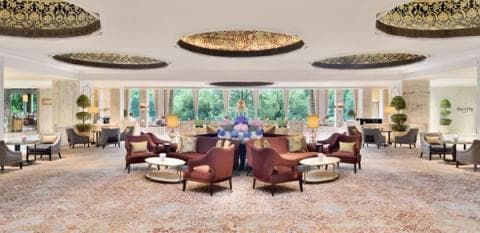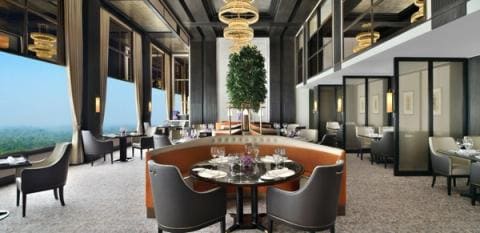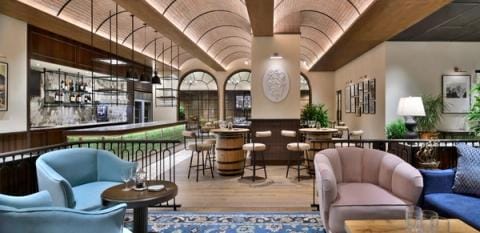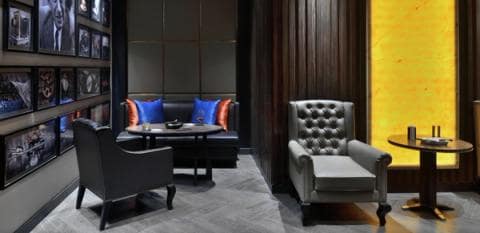

















Taj Mahal, New Delhi
Taj Mahal, New Delhi
02 Nov 2025
1 Room
Special Code

Attractions & Placesto Visit in Delhi
Title :
Connaught Place
Description :
The unofficial social epicentre of Delhi, affectionately called CP, this British built commercial and retail hub is a great place to window shop, people watch, visit art galleries and stroll the gargantuan underground Palika Bazaar. A key financial and business centre, the area offers several delights, from antique cinemas and toy shops to leading contemporary art galleries.
Connaught Place
Title :
National Museum
Description :
Located on Janpath, one of the largest museums in India was established in 1949. It showcases a variety of articles ranging from the prehistoric era to modern works of art. Besides hosting a variety of workshops, yoga, meditation sessions and cultural performances in the evenings, it also offers visitors a unique chance to see art conservators in action.
National Museum
Title :
Red Fort (Lal Qila)
Description :
Built by Shah Jahan in 1648, Delhi’s most recognized red sandstone landmark was said to have been designed by Ustad Ahmad Lahori, the architect behind the Taj Mahal. Wander across the octagonal-shaped UNESCO World Heritage Site, exploring expansive courtyards, the Diwan-i-Aam (Hall of Public Audience) - a marvel of Mughal geometry - Diwan-i-Khas (Hall of Private Audience) and the women’s only Rang Mahal (Palace of Colours). Jai Hind, the fort’s light and sound show vividly narrates India's history in the baritone voice of renowned actor, Amitabh Bachchan.
Red Fort (Lal Qila)
Title :
Humayun's Tomb
Description :
Mughal architecture meets tranquil greenery in the first Persian-style garden-tomb in the Indian subcontinent. Commissioned by Humayun’s wife Hamida Banu Begum, this rare memorial built by a woman for her husband, was later known as ‘Dormitory of the Mughals’, housing a 100 tombs inside a single complex. Wander along the pathways of this remarkable UNESCO World Heritage Site to marvel at its sublime proportions, seemingly floating over symmetrical gardens.
Humayun's Tomb
Title :
Qutub Minar
Description :
Built in the 12th century as a victory tower, the 73-metre-high minaret is crafted from red sandstone and marble, featuring intricate carvings and inscriptions from the Quran. The capital’s most towering monument looms over you as you stroll through the Qutub complex, which includes the Quwwat-ul-Islam Mosque, the Tomb of Imam Zamin, Major Smith’s Cupola, Sanderson’s Sundial and the Alai Darwaza. The most interesting legend here is related to the six-tonne, seven-metre-tall Iron Pillar. While it continues to capture the imagination of scientists, owing to its mysterious resistance to rust, there’s a popular belief that good fortune awaits you can completely wrap your hands around the pillar with your back touching it.
Qutub Minar
Title :
Lotus Temple
Description :
A marvellous symbol of unity and peace, the Lotus Temple - Baháʼí House of Worship - is distinguished by its exterior made of 27 free-standing marble ‘petals’ arranged in clusters of three to form nine sides, a number that is considered auspicious in the Baha’i faith. Explore the lush, idyllic temple complex that encompasses nine water pools lined with each petal, which glimmer in daylight. You can also meditate inside the prayer hall.
Lotus Temple
Title :
India Gate
Description :
Located on Rajpath, the awe-inspiring war memorial, a 42-metre-high archway of sandstone, rises majestically against the backdrop of Rashtrapati Bhawan. Enjoy ice cream from local vendors or pack a picnic to soak in the lively atmosphere. To experience the monument in a unique way, sign up for a session with Delhi City Segway Tour company from 5 pm to 9 pm, starting at INR 2500.
India Gate
Title :
Jama Masjid
Description :
A serene oasis at the heart of Old Delhi's chaotic energy, the capital's largest mosque is built on a 10 metre elevation and can hold a staggering 25,000 people. The marble and red-sandstone structure, also known as the ‘Friday Mosque’, doubles as a picnic spot by day, and looks stunning by night.
Jama Masjid
Title :
Akshardham Temple
Description :
Marvel at the intricate carvings and sculptures at this impressive spiritual centre dedicated to Lord Swaminarayan, while reflecting on India’s ancient culture and traditions. Explore the temple’s cultural exhibits, catch a film screening, take a serene boat ride, relax in the 6-acre garden and stay back to witness Sahaj Anand, the 24-minute evening multimedia water show held at Yagnapurush Kund, a massive replica of an ancient stepwell.
Akshardham Temple
Title :
Lodhi Gardens and Art District
Description :
This historic green oasis in the heart of the capital dates back to the 15th century and is named after the Lodi dynasty that once ruled over Delhi. Spread across 90 acres, it’s the city’s most elite park for morning walks, jogs and day picnics amidst ancient trees, lush lawns, blooming flower beds and some remarkable sculptures and artworks, especially the statue of Lady Willingdon.
Lodhi Gardens and Art District
Title :
Chandni Chowk
Description :
Delhi’s oldest and biggest market epitomises the capital’s lively, diverse culture. Designed as a half-moon-shaped square adorned with trees, canals and pools for 17th century royal Mughal processions, it’s now the epicentre of Delhi’s irresistible food scene, serving iconic paranthas, bedmi puris, samosas, kebabs and jalebis along with textiles, antiques and everything in between.
Chandni Chowk
Title :
Rajghat
Description :
Located on the banks of the Yamuna River, this peaceful, well maintained park has a simple black-marble platform marking the spot where Mahatma Gandhi was cremated following his assassination in 1948. The memorial is inscribed with his final words, “Hey Ram”. Stroll through the landscaped gardens, reflecting on the life and legacy of the Father of the Nation.
Rajghat
Title :
Ghalib Ki Haveli
Description :
Browse through the hand-written poems and books of legendary Urdu poet Mirza Ghalib at his 300-year old home in Old Delhi’s Ballimaran, designated as a memorial museum in 2000. There are also commissioned portraits and figures of Ghalib, including one commissioned by the Indian poet and lyricist Gulzar, in the premises.
Ghalib Ki Haveli
Title :
Dilli Haat
Description :
Designed to resemble a traditional village market (haat), this cultural and entertainment hub features artisan stalls on a rotating basis, offering a staggering variety of handlooms, jewellery, accessories, decor, toys and small goods. Stay back after a shopping spree to enjoy cultural performances in the evening.
Dilli Haat
Title :
Khan Market
Description :
Established in 1951 to aid post-partition immigrants, Khan Market is now among the most premium retail spaces in India. Walk through the lanes to discover homegrown designer labels like AMPM, Satya Paul, JODI, Amrapali alongside iconic vintage bookstores, Bahrisons and Faqir Chand. From upscale restaurants and Mughlai specialties at Khan Chacha to classic and contemporary art galleries, Khan Market offers something for everyone.
Khan Market
Title :
Safdarjung Tomb
Description :
Considered to be the last monumental tomb garden of the time, this magnificent marble and sandstone structure marked the end of an era of Mughal art and architecture that began with the Taj Mahal in Agra. It was built by the son of Safdarjung, the Wazir ul-Hindustan (Prime Minister) of the Indian subcontinent during the rule of Ahmad Shah Bahadur. Located in Jor Bagh, it’s one of the lesser-frequented yet grand monuments in the capital. Besides exploring the mausoleum, you can stroll around the lush gardens and perimetre wall.
Safdarjung Tomb
Title :
Purana Qila
Description :
One of Delhi’s oldest and most significant historical monuments stands as a symbol of the capital’s multi-layered history, from its mythological association with Indraprastha - capital of the Pandavas in the Mahabharata epic - to its Mughal heritage. Stretching across 300 acres, it features three prominent gateways, bastions, moats, a mosque and a library. Look out for the Sher Mandal, an octagonal red sandstone tower. It was on the steps of this very structure that Humayun fell to his death in 1556, marking a tragic end to a ruler whose life was filled with both triumph and turmoil.
Purana Qila
Title :
Jantar Mantar
Description :
Located near Connaught Place, this 18th century, open-air astronomical observatory was one of five of its kind, commissioned to be built across India by Maharaja Sawai Jai Singh II - a brilliant mathematician and astronomer - to aid in the study of celestial bodies, determine time, track planets and predict eclipses. Amongst the 13 large-scale architectural instruments is Samrat Yantra (a giant sundial used to measure the precise time of day), Misra Yantra (designed to determine the longest and shortest days of the year) and Jayaprakash Yantra (used to determine the coordinates of celestial bodies).
Jantar Mantar
Title :
Bikaner House
Description :
Spread over 8 acres on the iconic India Gate hexagon, the former palace of the Maharaja of Bikaner underwent extensive restoration to become one of the capital’s favourite cultural venues, hosting events ranging from book launches and art exhibits to jazz music performances. It is also home to award-winning restaurants, an elegant coffee shop and a concept boutique showcasing the best of Indian crafts and design.
Bikaner House
Title :
Connaught Place
Description :
The unofficial social epicentre of Delhi, affectionately called CP, this British built commercial and retail hub is a great place to window shop, people watch, visit art galleries and stroll the gargantuan underground Palika Bazaar. A key financial and business centre, the area offers several delights, from antique cinemas and toy shops to leading contemporary art galleries.
Connaught Place
Title :
National Museum
Description :
Located on Janpath, one of the largest museums in India was established in 1949. It showcases a variety of articles ranging from the prehistoric era to modern works of art. Besides hosting a variety of workshops, yoga, meditation sessions and cultural performances in the evenings, it also offers visitors a unique chance to see art conservators in action.
National Museum
Title :
Red Fort (Lal Qila)
Description :
Built by Shah Jahan in 1648, Delhi’s most recognized red sandstone landmark was said to have been designed by Ustad Ahmad Lahori, the architect behind the Taj Mahal. Wander across the octagonal-shaped UNESCO World Heritage Site, exploring expansive courtyards, the Diwan-i-Aam (Hall of Public Audience) - a marvel of Mughal geometry - Diwan-i-Khas (Hall of Private Audience) and the women’s only Rang Mahal (Palace of Colours). Jai Hind, the fort’s light and sound show vividly narrates India's history in the baritone voice of renowned actor, Amitabh Bachchan.
Red Fort (Lal Qila)
Title :
Humayun's Tomb
Description :
Mughal architecture meets tranquil greenery in the first Persian-style garden-tomb in the Indian subcontinent. Commissioned by Humayun’s wife Hamida Banu Begum, this rare memorial built by a woman for her husband, was later known as ‘Dormitory of the Mughals’, housing a 100 tombs inside a single complex. Wander along the pathways of this remarkable UNESCO World Heritage Site to marvel at its sublime proportions, seemingly floating over symmetrical gardens.
Humayun's Tomb
Title :
Qutub Minar
Description :
Built in the 12th century as a victory tower, the 73-metre-high minaret is crafted from red sandstone and marble, featuring intricate carvings and inscriptions from the Quran. The capital’s most towering monument looms over you as you stroll through the Qutub complex, which includes the Quwwat-ul-Islam Mosque, the Tomb of Imam Zamin, Major Smith’s Cupola, Sanderson’s Sundial and the Alai Darwaza. The most interesting legend here is related to the six-tonne, seven-metre-tall Iron Pillar. While it continues to capture the imagination of scientists, owing to its mysterious resistance to rust, there’s a popular belief that good fortune awaits you can completely wrap your hands around the pillar with your back touching it.
Qutub Minar
Title :
Lotus Temple
Description :
A marvellous symbol of unity and peace, the Lotus Temple - Baháʼí House of Worship - is distinguished by its exterior made of 27 free-standing marble ‘petals’ arranged in clusters of three to form nine sides, a number that is considered auspicious in the Baha’i faith. Explore the lush, idyllic temple complex that encompasses nine water pools lined with each petal, which glimmer in daylight. You can also meditate inside the prayer hall.
Lotus Temple
Title :
India Gate
Description :
Located on Rajpath, the awe-inspiring war memorial, a 42-metre-high archway of sandstone, rises majestically against the backdrop of Rashtrapati Bhawan. Enjoy ice cream from local vendors or pack a picnic to soak in the lively atmosphere. To experience the monument in a unique way, sign up for a session with Delhi City Segway Tour company from 5 pm to 9 pm, starting at INR 2500.
India Gate
Title :
Jama Masjid
Description :
A serene oasis at the heart of Old Delhi's chaotic energy, the capital's largest mosque is built on a 10 metre elevation and can hold a staggering 25,000 people. The marble and red-sandstone structure, also known as the ‘Friday Mosque’, doubles as a picnic spot by day, and looks stunning by night.
Jama Masjid
Title :
Akshardham Temple
Description :
Marvel at the intricate carvings and sculptures at this impressive spiritual centre dedicated to Lord Swaminarayan, while reflecting on India’s ancient culture and traditions. Explore the temple’s cultural exhibits, catch a film screening, take a serene boat ride, relax in the 6-acre garden and stay back to witness Sahaj Anand, the 24-minute evening multimedia water show held at Yagnapurush Kund, a massive replica of an ancient stepwell.
Akshardham Temple
Title :
Lodhi Gardens and Art District
Description :
This historic green oasis in the heart of the capital dates back to the 15th century and is named after the Lodi dynasty that once ruled over Delhi. Spread across 90 acres, it’s the city’s most elite park for morning walks, jogs and day picnics amidst ancient trees, lush lawns, blooming flower beds and some remarkable sculptures and artworks, especially the statue of Lady Willingdon.
Lodhi Gardens and Art District
Title :
Chandni Chowk
Description :
Delhi’s oldest and biggest market epitomises the capital’s lively, diverse culture. Designed as a half-moon-shaped square adorned with trees, canals and pools for 17th century royal Mughal processions, it’s now the epicentre of Delhi’s irresistible food scene, serving iconic paranthas, bedmi puris, samosas, kebabs and jalebis along with textiles, antiques and everything in between.
Chandni Chowk
Title :
Rajghat
Description :
Located on the banks of the Yamuna River, this peaceful, well maintained park has a simple black-marble platform marking the spot where Mahatma Gandhi was cremated following his assassination in 1948. The memorial is inscribed with his final words, “Hey Ram”. Stroll through the landscaped gardens, reflecting on the life and legacy of the Father of the Nation.
Rajghat
Title :
Ghalib Ki Haveli
Description :
Browse through the hand-written poems and books of legendary Urdu poet Mirza Ghalib at his 300-year old home in Old Delhi’s Ballimaran, designated as a memorial museum in 2000. There are also commissioned portraits and figures of Ghalib, including one commissioned by the Indian poet and lyricist Gulzar, in the premises.
Ghalib Ki Haveli
Title :
Dilli Haat
Description :
Designed to resemble a traditional village market (haat), this cultural and entertainment hub features artisan stalls on a rotating basis, offering a staggering variety of handlooms, jewellery, accessories, decor, toys and small goods. Stay back after a shopping spree to enjoy cultural performances in the evening.
Dilli Haat
Title :
Khan Market
Description :
Established in 1951 to aid post-partition immigrants, Khan Market is now among the most premium retail spaces in India. Walk through the lanes to discover homegrown designer labels like AMPM, Satya Paul, JODI, Amrapali alongside iconic vintage bookstores, Bahrisons and Faqir Chand. From upscale restaurants and Mughlai specialties at Khan Chacha to classic and contemporary art galleries, Khan Market offers something for everyone.
Khan Market
Title :
Safdarjung Tomb
Description :
Considered to be the last monumental tomb garden of the time, this magnificent marble and sandstone structure marked the end of an era of Mughal art and architecture that began with the Taj Mahal in Agra. It was built by the son of Safdarjung, the Wazir ul-Hindustan (Prime Minister) of the Indian subcontinent during the rule of Ahmad Shah Bahadur. Located in Jor Bagh, it’s one of the lesser-frequented yet grand monuments in the capital. Besides exploring the mausoleum, you can stroll around the lush gardens and perimetre wall.
Safdarjung Tomb
Title :
Purana Qila
Description :
One of Delhi’s oldest and most significant historical monuments stands as a symbol of the capital’s multi-layered history, from its mythological association with Indraprastha - capital of the Pandavas in the Mahabharata epic - to its Mughal heritage. Stretching across 300 acres, it features three prominent gateways, bastions, moats, a mosque and a library. Look out for the Sher Mandal, an octagonal red sandstone tower. It was on the steps of this very structure that Humayun fell to his death in 1556, marking a tragic end to a ruler whose life was filled with both triumph and turmoil.
Purana Qila
Title :
Jantar Mantar
Description :
Located near Connaught Place, this 18th century, open-air astronomical observatory was one of five of its kind, commissioned to be built across India by Maharaja Sawai Jai Singh II - a brilliant mathematician and astronomer - to aid in the study of celestial bodies, determine time, track planets and predict eclipses. Amongst the 13 large-scale architectural instruments is Samrat Yantra (a giant sundial used to measure the precise time of day), Misra Yantra (designed to determine the longest and shortest days of the year) and Jayaprakash Yantra (used to determine the coordinates of celestial bodies).
Jantar Mantar
Title :
Bikaner House
Description :
Spread over 8 acres on the iconic India Gate hexagon, the former palace of the Maharaja of Bikaner underwent extensive restoration to become one of the capital’s favourite cultural venues, hosting events ranging from book launches and art exhibits to jazz music performances. It is also home to award-winning restaurants, an elegant coffee shop and a concept boutique showcasing the best of Indian crafts and design.
Bikaner House
Title :
Connaught Place
Description :
The unofficial social epicentre of Delhi, affectionately called CP, this British built commercial and retail hub is a great place to window shop, people watch, visit art galleries and stroll the gargantuan underground Palika Bazaar. A key financial and business centre, the area offers several delights, from antique cinemas and toy shops to leading contemporary art galleries.
Connaught Place
Title :
National Museum
Description :
Located on Janpath, one of the largest museums in India was established in 1949. It showcases a variety of articles ranging from the prehistoric era to modern works of art. Besides hosting a variety of workshops, yoga, meditation sessions and cultural performances in the evenings, it also offers visitors a unique chance to see art conservators in action.
National Museum
Title :
Red Fort (Lal Qila)
Description :
Built by Shah Jahan in 1648, Delhi’s most recognized red sandstone landmark was said to have been designed by Ustad Ahmad Lahori, the architect behind the Taj Mahal. Wander across the octagonal-shaped UNESCO World Heritage Site, exploring expansive courtyards, the Diwan-i-Aam (Hall of Public Audience) - a marvel of Mughal geometry - Diwan-i-Khas (Hall of Private Audience) and the women’s only Rang Mahal (Palace of Colours). Jai Hind, the fort’s light and sound show vividly narrates India's history in the baritone voice of renowned actor, Amitabh Bachchan.
Red Fort (Lal Qila)
Itineraries
Itineraries
TRAVEL STORIES
TRAVEL STORIES
Must-visit Places in Delhi
GIFT HAMPERS
Taj hampers convey warm sentiments with luxury accessories, culinary treats and artisanal sweets (mithai). Brighten celebrations as you choose from cu...BREAKFAST INCLUSIVE RATE
Wake up to a symphony of flavours with our delectable breakfast spread and enjoy seamless internet connectivity and flexible cancellation for that add...SUITE SURPRISES
Enjoy great value on suites with 20% savings. Get the best of our suites with daily breakfast, Taj Club access wherever available, special suite ameni...HOTELS IN NEW DELHI
Experience ultimate luxury at our 5-star hotels in Delhi. Our hotels are located close to many important spots in the city. We offer state-of-the-art ...NEUPASS
Earn and redeem NeuCoins for exclusive member rates, with your Neupass membership. Indulge in memorable getaways, gourmet delights, spa treatments and...EPICURE
Epicure lifestyle memberships are made for sheer indulgence. Crafted for the creation of special moments, benefits encompass plush rooms & suites, fin...TIMELESS WEDDINGS
Experience the magic of a Taj wedding with our expert planners crafting flawless events, creating timeless memories for generations.J WELLNESS CIRCLE
Embark on a wellness journey infused with ancient Indian healing energies and experiences, revitalizing your mind, body, and spirit.EXCLUSIVE OFFERS
Enjoy exclusive deals on stays, delectable dining experiences, and rejuvenating spa treatments. Elevate your moments with us. Book now to savor unpara...TAJ EXPERIENCE GIFT CARDS
Gift the luxury of a moment that will become a cherished memory. An exclusive experience, carefully selected, crafted and refined by time.GIFT HAMPERS
Taj hampers convey warm sentiments with luxury accessories, culinary treats and artisanal sweets (mithai). Brighten celebrations as you choose from cu...BREAKFAST INCLUSIVE RATE
Wake up to a symphony of flavours with our delectable breakfast spread and enjoy seamless internet connectivity and flexible cancellation for that add...SUITE SURPRISES
Enjoy great value on suites with 20% savings. Get the best of our suites with daily breakfast, Taj Club access wherever available, special suite ameni...HOTELS IN NEW DELHI
Experience ultimate luxury at our 5-star hotels in Delhi. Our hotels are located close to many important spots in the city. We offer state-of-the-art ...NEUPASS
Earn and redeem NeuCoins for exclusive member rates, with your Neupass membership. Indulge in memorable getaways, gourmet delights, spa treatments and...EPICURE
Epicure lifestyle memberships are made for sheer indulgence. Crafted for the creation of special moments, benefits encompass plush rooms & suites, fin...TIMELESS WEDDINGS
Experience the magic of a Taj wedding with our expert planners crafting flawless events, creating timeless memories for generations.J WELLNESS CIRCLE
Embark on a wellness journey infused with ancient Indian healing energies and experiences, revitalizing your mind, body, and spirit.EXCLUSIVE OFFERS
Enjoy exclusive deals on stays, delectable dining experiences, and rejuvenating spa treatments. Elevate your moments with us. Book now to savor unpara...TAJ EXPERIENCE GIFT CARDS
Gift the luxury of a moment that will become a cherished memory. An exclusive experience, carefully selected, crafted and refined by time.GIFT HAMPERS
Taj hampers convey warm sentiments with luxury accessories, culinary treats and artisanal sweets (mithai). Brighten celebrations as you choose from cu...